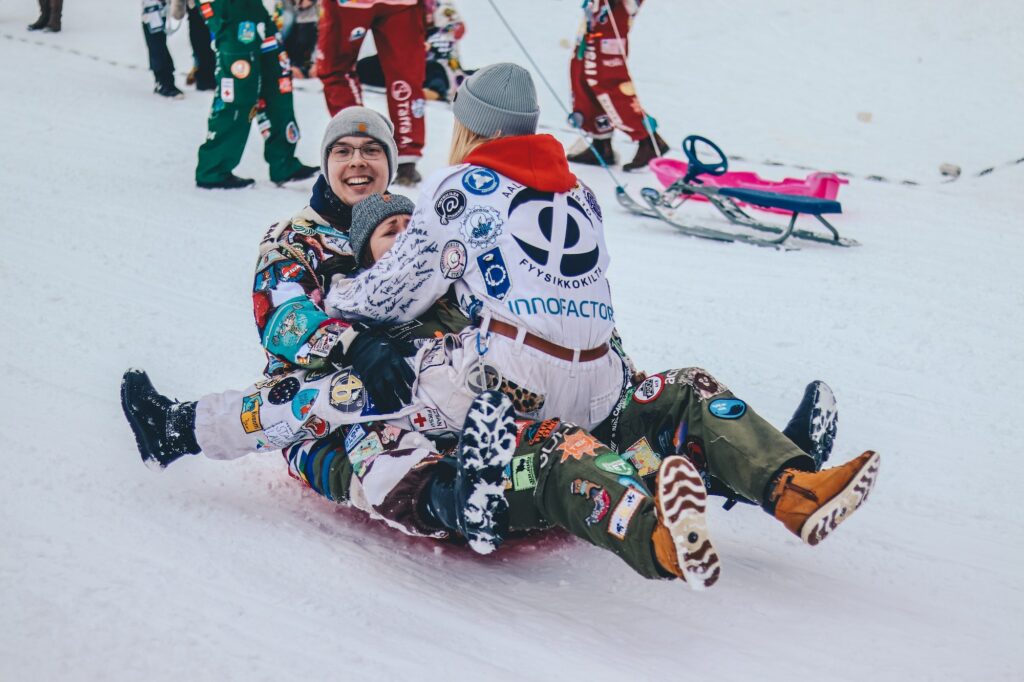
This weekend we were visiting friends and went sledging (aka tobogganing). Our daughter was excited to go and loved the snow. But when we arrived and I took her down for her first ride, we found it difficult to steer and it was a bit too fast for her. After that she refused to try again. I tried playing in the snow, building snow cities, sliding on our bellies, and going a very short distance on a sledge. Nothing could get her to try again. Something had happened in her body and nothing was going to change her mind.
Later in the day, we went swimming. The pool had an obstacle course. You had to run across floating circles to get from one ‘raft’ to the next. Our daughter tried this and fell in immediately. I worried that was going to be it. But this time, she tried again. I held her hand for the next 20 times to get her across and then on the 21st try she ran across by herself.
I don’t know what the difference between the two experiences were, but I do know that we see the same thing in adults in experiences of change. Sometimes we flat out refuse to try or try a second time. While other times we are happy to try again. Perhaps it’s shame or self-doubt or self-perseveration. Perhaps it’s our perception of how others are experiencing the change – it would have been easy to perceive that everyone else on the sledging hill we’re experts. While in the swimming pool, more people were falling into the water than those making it across.
Change often has a public nature to it and the view of our peers matter. But also just because a person is ‘against’ one type of change or experience, doesn’t mean they are against all change. This objectivity is key for change makers to keep.

0 Comments